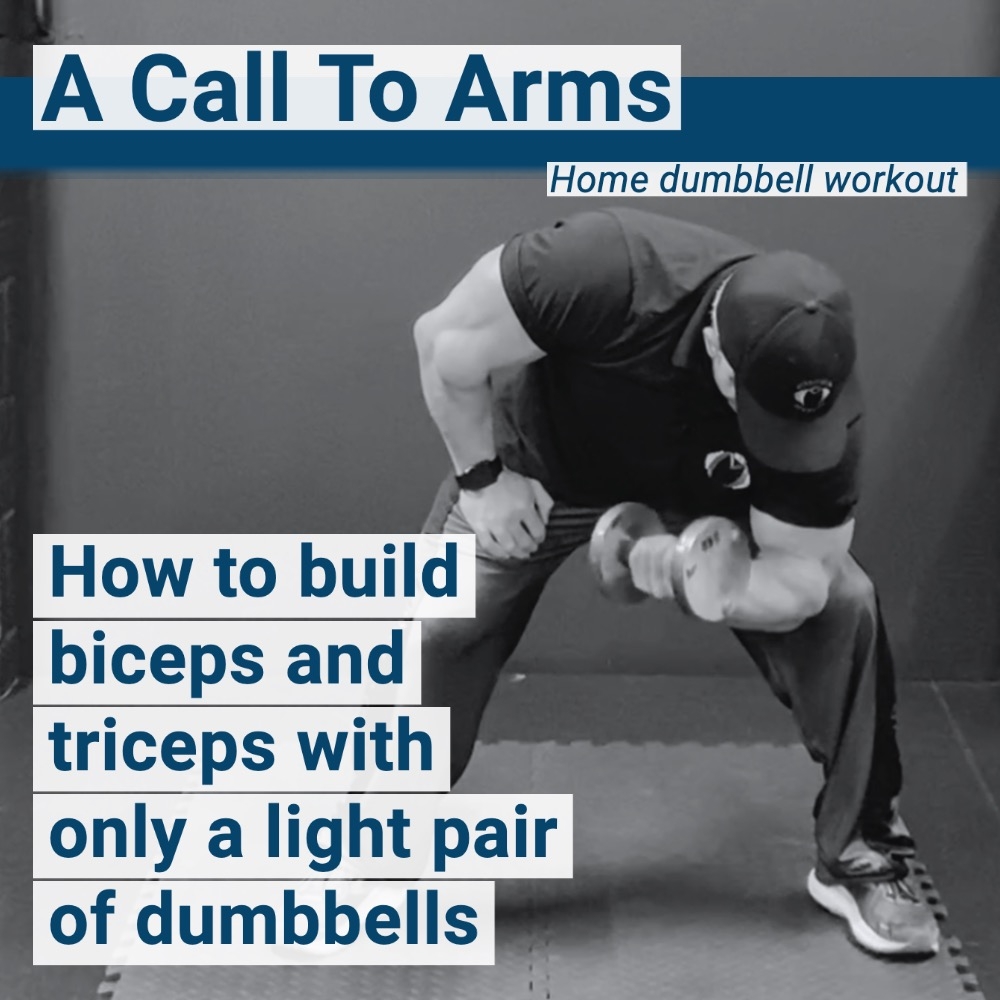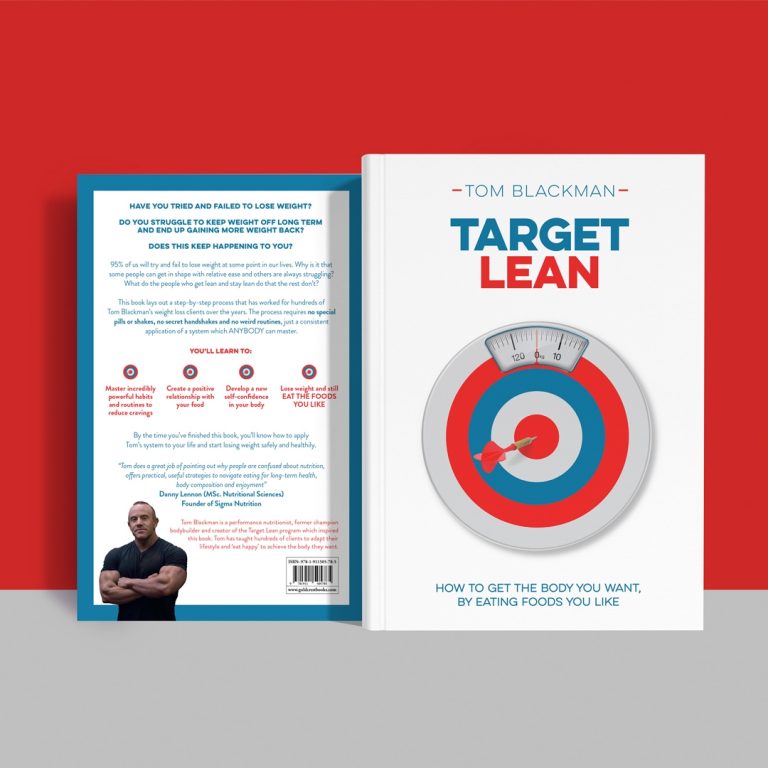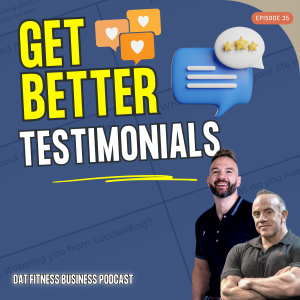If you only have a limited amount of weight to train at home then here's how to maximise muscle growth
With the current lockdown many people are having to workout from home.
Some people are lucky enough to have purchased a range of equipment in preparation, while many are stuck trying to make do with what they can get.
Dumbbells are very expensive to buy singly and if you want a set then you’re looking at many hundreds of pounds.
So how can you get a good biceps and triceps workout with only limited weights? Here’s my quick guide followed by a workout video you can follow along with at home.
The Problem and the Solution
Here’s a quick overview of the problem and the solution to training at home with minimal weights.
I’ll go into more detail below but if this is enough feel free to skip to the video at the bottom of the page.
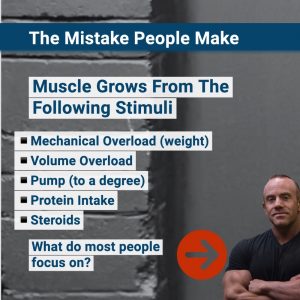
There's More Than One Way to Stimulate Muscle Growth
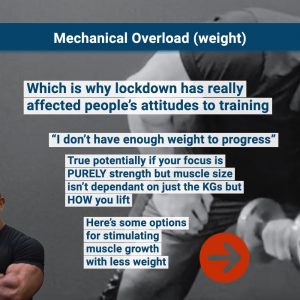
It's a Common Error to Focus on Just Weight Overload

3 Other Ways to Stimulate Muscle Growth

Bicep and Tricep Training is Not About How Much Weight You Can Lift
Although many people will disagree, my years of training and coaching has taught me that trying to overload the arm muscles with excessive weight normally results in more injuries than muscle gain.
I’ve ended up with more bicep tendon and elbow pain from trying to ego lift a bar than I have new muscle growth.
I’ve also seen many people use an excess of body movement to lift a larger weight on their arms which ironically takes the stress off the target muscle of the biceps or triceps.
Since the arms are involved in any upper body training they are trained in an indirect manner through rows, presses and pulldowns.
Therefore when it comes to growing arms directly, it’s very important to make absolutely sure that you are focussing on the target muscle and not your ego.
Alternative ways to stimulate muscle growth in the arms
Hypertrophy (muscle growth) comes from a number of stimuli
- Mechanical Overload
- Volume Overload
- Pump
- Optimal Protein Intake
- Steroids
Mechanical Overload
This is the main route that most people follow in the gym. Add more weight and lift until you can’t lift anymore.
It’s a pretty easy and logical method and it’s proven to work. It’s also very nice to lift more than you did last time, it gives us a sense of accomplishment. The problem when you are training at home is that continually increasing the weight may not be possible. This is one of the main reasons why training in lockdown is providing a stressful and non productive training program for individuals having to workout at home.
Volume Overload
Muscle grows from being taken to failure and that does not always need to be from a maximal overload of weight.
In fact a lot of research has demonstrated that a sub maximal weight taken to failure with over 7 reps is as good at producing a hypertrophy response as a maximal weight of 3-5 reps.
Many would argue (including me) that volume overload is a better way to grow muscle as a general training methodology. Bodybuilders have been using volume training for decades to grow much bigger muscles. A support of this theory is that the body operates redundancy measures.
The Redundancy Principle
When you perform any exercise the body does not fail because it is completely exhausted. Even marathon runners who collapse at the end of a race still have glycogen stores in their muscles. Bodybuilders who have been put through huge workouts have still only used around 40-50% of their muscle glycogen but feel exhausted.
This is due to the redundancy principle that the body keeps some reserve in order to keep us moving around.
Lifting a huge weight may mean your muscles fail at that weight but it doesn’t mean you’ve used every single muscle fibre to lift it. The body fires enough fibres to lift that weight and always keeps some smaller, weaker fibres around. This is why you are able to do things like drop sets of the same exercise. The muscle still feels fatigued but you are able to get a few more reps out.
This redundancy principle means that we can fully fatigue the muscle (or as much as the body will allow) by reducing the total weight and increasing the total volume of reps. Lifting with a sub maximal weight allows more fibres to be engaged to accomplish the task.
The result?
More fibres taken to failure and more muscle building stimulus applied.
How to Apply Volume Principles to Home Training
There are effectively 3 main techniques that we can apply to home training. Because of the reduced availability of weight it’s unlikely that we can utilise the most common volume overload principle – Drop Sets. Instead here are 3 techniques that you can utilise with a limited weight.
Time Under Tension - TUT
Essentially this is a rep in slow motion. We decrease the speed of the rep to force more time under tension on the muscle.
This means that the muscle must adapt to holding a weight for longer which applies a different stimulus. This technique is especially suited to lighter weights as a heavy or near maximal weight requires a combination of power and speed to lift it. Trying to slow down a really heavy weight will drastically reduce your reps on that heavy weight and potentially place a harmful load on the tendons.
Time under tension with a lighter weight does not place as much load on the tendons and allows you to focus on a slow and meaningful contraction.
As a guide 3 seconds up and 3 seconds down would be a good TUT rep. You still move the weight with purpose but slower.
Volume
Increasing the reps and sets of an exercise will bring in more muscle fibres to get the job done. It’s important that when you employ a volume principle like this you reduce the rest time. This is especially true for a limited weight availability as it’s likely the weight will be easy to handle and as a results a 2-3 minute rest will result in a full recovery of the muscle. Keep the rest periods to 30-60 seconds.
As a guide to sets and reps, at least 4 sets of at least 15 reps.
Pause or Peak Contraction
Peak contraction is a proper old school bodybuilding technique. You don’t really see the term used any more, it’s often mistakenly applied as an isometric hold. However a ‘hold’ is not the same as a peak contraction. With a peak contraction you actively squeeze the muscle at the hold point to force much more force at the contraction point.
This uses much more ATP (contractile energy of muscles) and also much more stress on the muscle.
Adding a few peak contractions into your workout will greatly increase the intensity of the lift and fatigue your muscles much quicker. It’s not one to do on every single rep on every single set but it’s a good tool to be applied at the beginning or the end of a set.
Watch and follow the workout from your home
Grab some dumbbells and join me on a mission to apply these techniques to your own biceps and triceps.
I show you how to incorporate all the techniques above into a 30 minutes arm workout that you can do from home.
